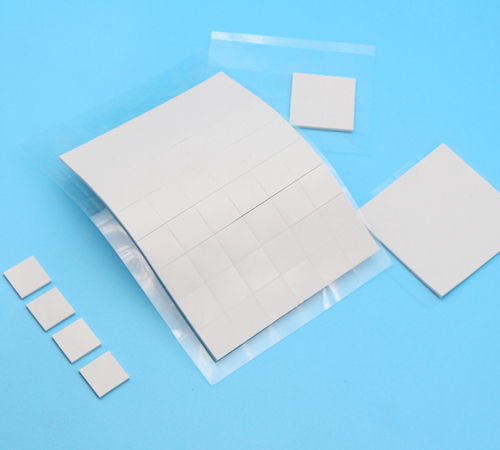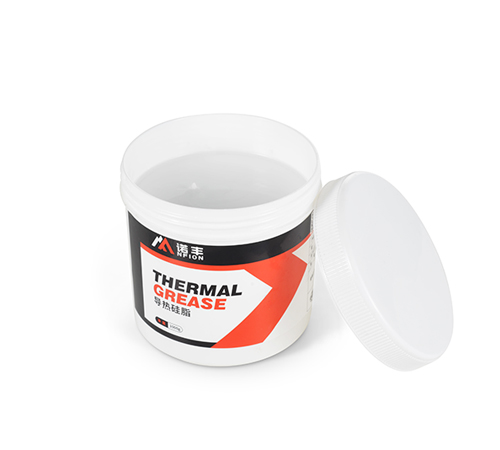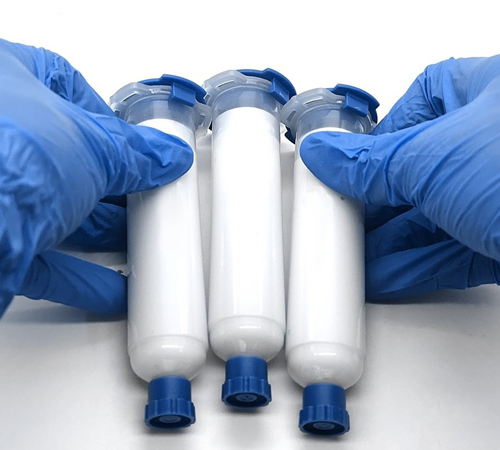In today's increasingly sophisticated electronic devices, heat dissipation has become one of the key factors in ensuring device stability and prolonging lifespan. Thermal pads are essential thermal interface materials widely used in electronic devices to fill the gaps between heat-generating components and heat sinks, thus enhancing thermal conductivity and ensuring stable operation of devices. Traditional thermal pads often contain silicone oil or silicone resin, while silicone-free thermal pads do not include these components and have gained increasing attention and application in the electronics industry in recent years.

Definition of Silicone-Free Thermal Pad
A silicone-free thermal pad is a non-silicone thermal material that uses special resin as a substrate. It is produced by adding metal oxides and special additives, followed by specific processing techniques. The most significant feature of this material is the absence of silicone oil volatility and silicone oil exudation, which prevents circuit failures and contamination issues that may arise from traditional silicone-based materials. Therefore, silicone-free thermal pads are also known as oil-free and pollution-free thermal pads, making them particularly suitable for applications that are sensitive to silicone contamination.
Characteristics of Silicone-Free Thermal Pads
1. Silicone Oil-Free: This avoids issues related to the volatility, migration, and contamination of sensitive components caused by silicone oil.
2. Excellent Thermal Conductivity: Despite lacking silicone, silicone-free thermal pads still possess outstanding thermal conductivity, effectively conducting heat.
3. High Reliability: Silicone-free materials perform exceptionally well in high-temperature environments, offering aging and wear resistance, and do not experience performance degradation over extended use.
4. Environmental Friendliness: Compared to traditional silicone-containing materials, silicone-free thermal pads are more environmentally friendly during production and use, reducing the potential hazards of silicone-based compounds to the environment.
5. Low Volatility and Low Oil Exudation Rate: During prolonged operation, silicone-free thermal pads exhibit nearly no volatile silicone molecules, ensuring low oil exudation rates that maintain device stability and reliability.
6. Good Self-Adhesion and Temperature Resistance: Many silicone-free thermal pads have excellent double-sided adhesion, making installation easy while maintaining stable performance over a wide temperature range.

Material Composition of Silicone-Free Thermal Pads
Silicone-free thermal pads typically consist of two main components: thermal fillers and polymer matrices.
1. Thermal Fillers: Common thermal fillers include boron nitride, aluminum oxide, and magnesium oxide. These materials have good thermal conductivity, effectively transferring heat from the heat source to the heat sink.
2. Polymer Matrices: Commonly used polymer matrix materials include polyurethane and polyimide. These materials offer good mechanical properties and thermal stability, allowing them to maintain stability under high temperature and pressure conditions.
Application Areas of Silicone-Free Thermal Pads
Silicone-free thermal pads find wide application in many fields, especially excelling in situations sensitive to silicone contamination. The main application areas include:
1. Electronics and Electrical Equipment: In sectors such as hard drives, optical communications, high-end industrial control, and medical electronics, silicone-free thermal pads are used for thermal management in semiconductor devices, micro heat pipe heat sinks, and memory modules. They effectively reduce the contamination of sensitive components like screens and lenses from silicone oil volatilization, ensuring stable device operation.
2. Automotive Electronics: Automotive electronic components have high requirements for temperature and environmental conditions. Silicone-free thermal pads provide reliable thermal dissipation under harsh conditions.
3. Telecommunications Equipment: In specialized fields such as telecommunications hardware and equipment, silicone-free thermal pads have become an essential part of thermal management solutions due to their excellent thermal performance and reliability.

Advantages and Challenges of Silicone-Free Thermal Pads
Advantages
1. Pollution Prevention: Silicone-free thermal pads avoid contamination issues caused by the volatilization and migration of silicone oil, making them especially suitable for applications sensitive to silicone contamination.
2. High Stability: These pads maintain stable performance in high-temperature and high-pressure environments and are less prone to aging, making them suitable for long-term continuous operation.
3. Environmental Friendliness: Silicone-free materials are more environmentally friendly during production and use, contributing to reduced environmental pollution.
Challenges
1. Higher Costs: The production process for silicone-free thermal pads is relatively complex, resulting in higher material costs, making them slightly more expensive than traditional silicone-containing pads.
2. Market Acceptance: Although silicone-free thermal pads have significant advantages in certain applications, their acceptance in the market still needs improvement, and time is required for promotion.
Conclusion
As a new type of thermal material, silicone-free thermal pads are gradually occupying an important position in the electronics industry due to their unique advantages. Despite facing certain challenges, silicone-free thermal pads are expected to play a crucial role in more fields as technology advances and the market becomes more widespread. In the future, silicone-free thermal pads will continue to drive the development of heat dissipation technology for electronic devices, making significant contributions to improving device performance and reliability.



 CN >
CN >



